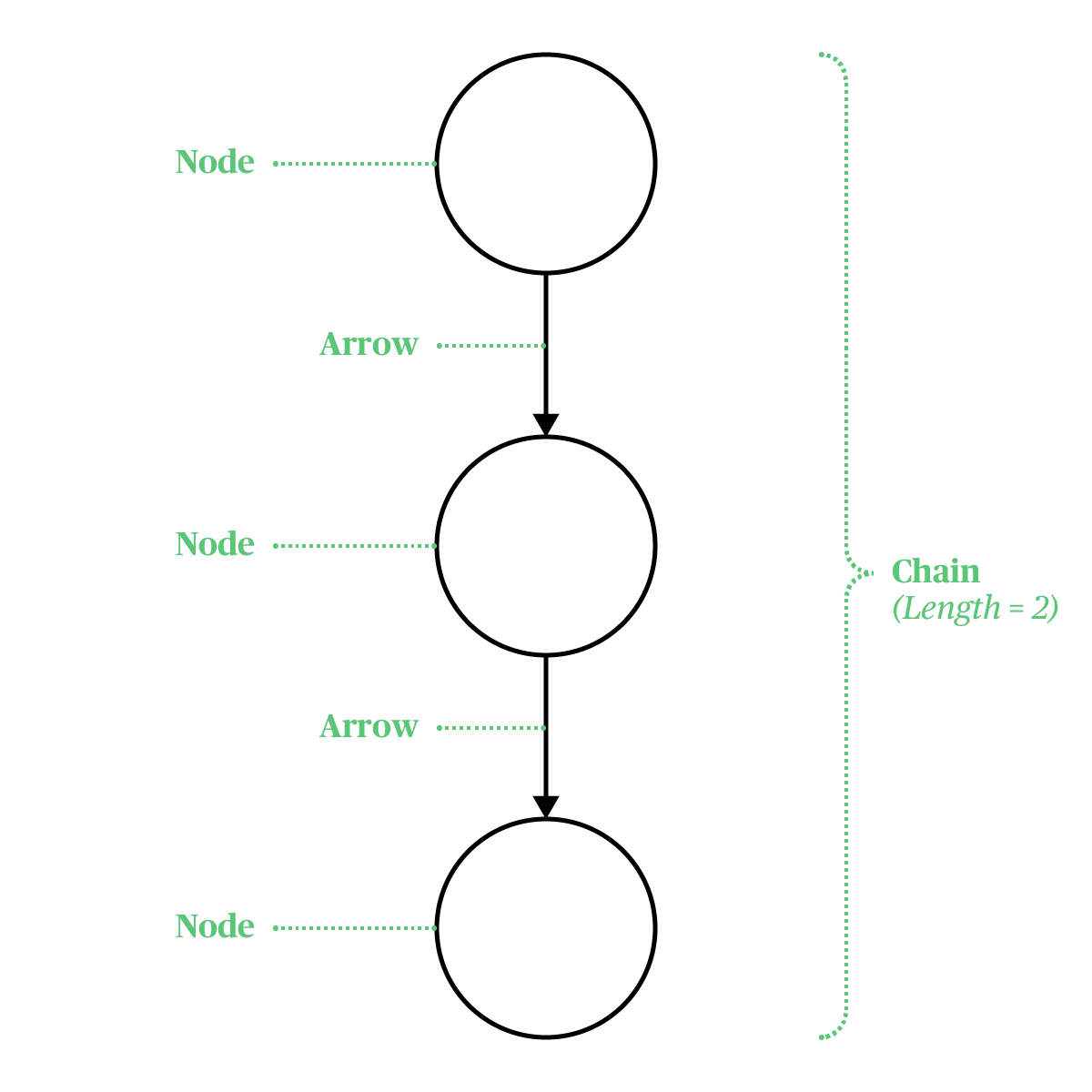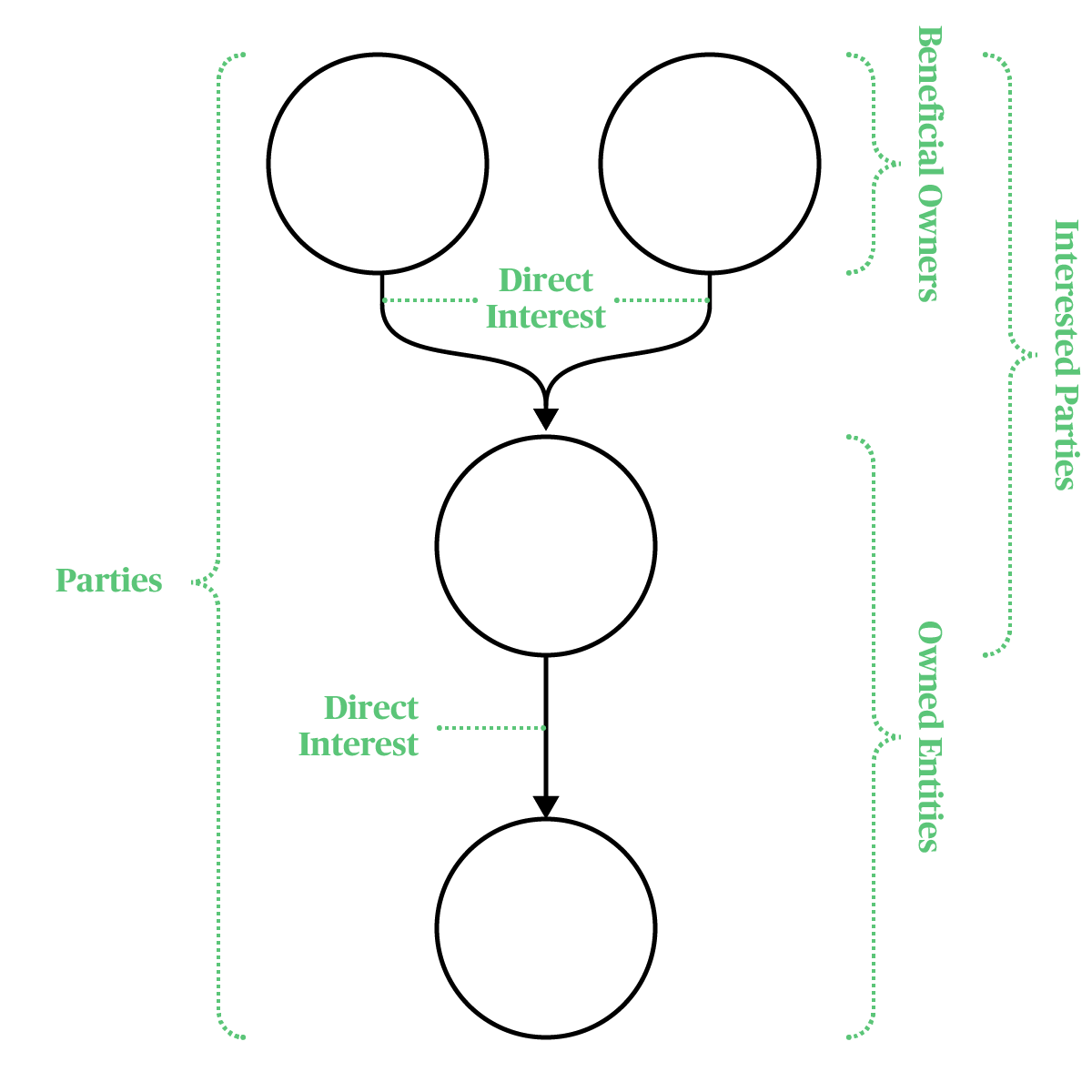Beneficial Ownership Visualisation System
Definitions
The following terms are used throughout the BOVS specifications.
General
At their core, BOVS Diagrams are directed graphs (basically, flow diagrams). They consist of Nodes (vertices), connected by Arrows (edges).
The following terms are used to talk generally about parts of BOVS Diagrams.

Node - Nodes function like nouns, representing Parties (see below).
Arrow - Arrows function like verbs, connecting Nodes to show relationships.
Chain - A series of Nodes continuously connected by Arrows is called a Chain. The “start” of the Chain is the first Node and the “end” is the last, based on the direction of the Arrows.
Distance - The Distance between two Nodes is the length of the shortest Chain that connects them. The length of a Chain is the number of Arrows that are present in it. Two parties are ‘distant’ if the Chain connecting them has a length greater than 1.
Structures
The following terms are used to talk generally about the participants within beneficial ownership structures.

Party - General term for any kind of thing (e.g. Person, Company) that can be involved in a beneficial ownership situation.
Interested Party - Any Party that has ownership or control of another Party. The Interested Party at the start of a Chain is the Beneficial Owner.
Beneficial Owner - Beneficial Owners are a type of Party that cannot be owned or controlled, and so always begin a Chain, e.g. a Person.
Owned Entities - Entities are always owned or controlled by an Interested Party, and can appear at any point in a Chain except the start.
Direct/Indirect Interest - A Party has a Direct interest in another if the Distance between them is 1. Otherwise the interest is Indirect.